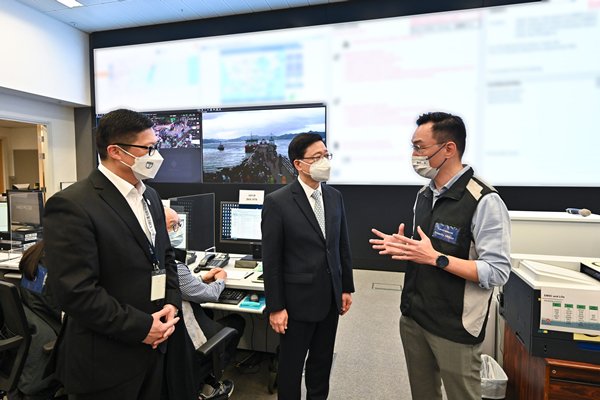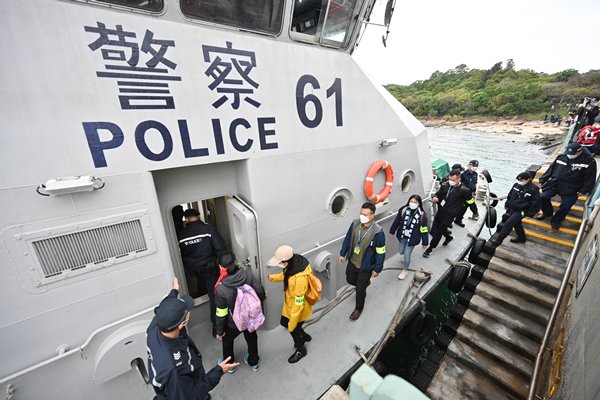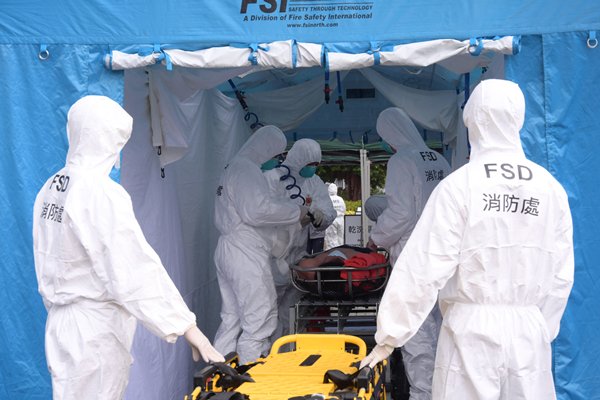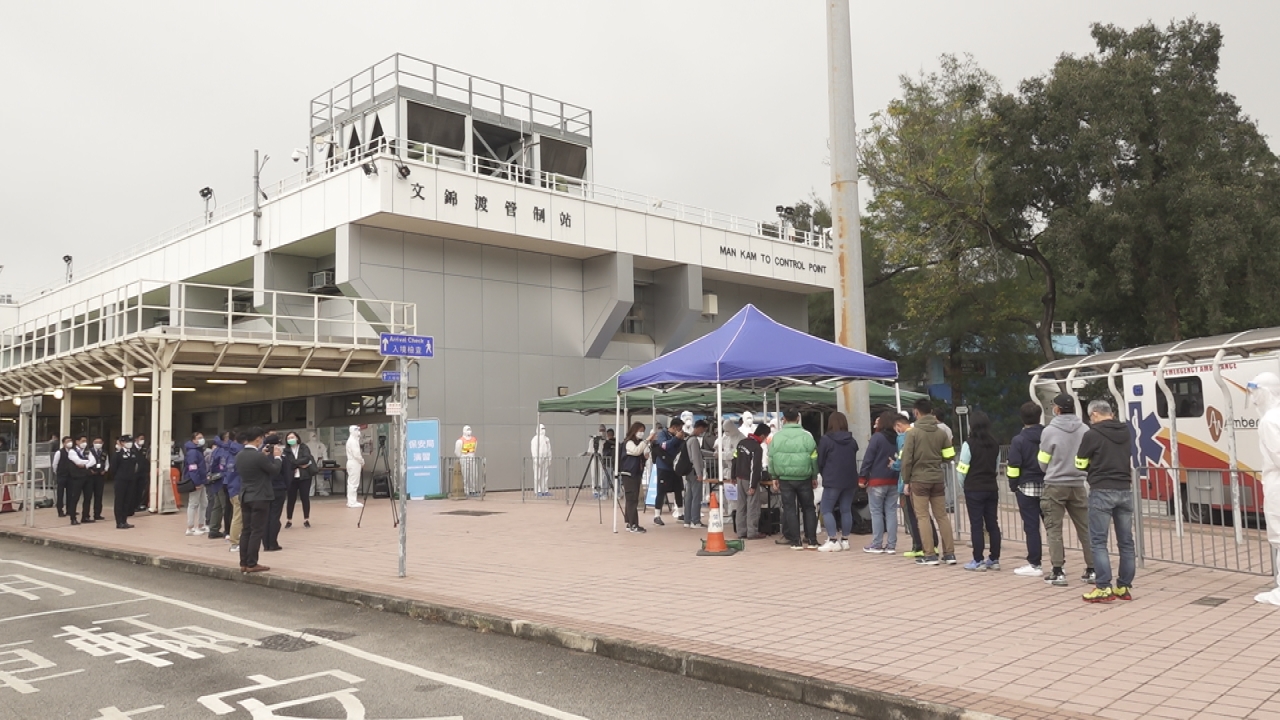Nuclear emergency drill held
A large-scale interdepartmental exercise based on the Daya Bay Contingency Plan (DBCP) was conducted today to test and enhance the nuclear emergency preparedness and knowledge of relevant personnel in dealing with nuclear power station emergencies that may affect Hong Kong.
Chief Executive John Lee and Chief Secretary Chan Kwok-ki, together with a number of principal officials and about 1,400 personnel from various departments and organisations participated in the exercise.
The starting scenario of the exercise simulated a chain of equipment fault events at the Guangdong Daya Bay Nuclear Power Station (GNPS), leading to a potential off-site emergency situation involving a release of radioactive materials.
Upon notification of the incident in the exercise this morning, the Government simulated the activation of the DBCP and the Emergency Monitoring & Support Centre (EMSC) under the Security Bureau as well as the dissemination of emergency information to the public through the media.
The Hong Kong Observatory (HKO), the Department of Health (DH) and relevant government departments immediately conducted environmental radiation monitoring and assessment and provided timely updates on the situation.
In a simulated response to the incident, the Chief Executive's Steering Group chaired by Mr Lee, convened a meeting in the morning and deliberated on recommendations made by Secretary for Security Tang Ping-keung.
Among the recommendations were raising the emergency response level, stepped-up radiation monitoring, and enhanced monitoring of imported food from the Mainland and locally produced food as well as fresh water.
As directed by the Chief Executive, Mr Tang chaired the Implementation Task Force meeting co-ordinating the implementation of the DBCP.
Mr Lee, accompanied by the security chief, inspected the operation of the EMSC in co-ordinating with relevant bureaus and departments to handle the nuclear emergency, and know more about the latest situation.
To test the Government’s capability of adopting appropriate precautionary measures, Police assisted in evacuating villagers and visitors in Tung Ping Chau and the Government Flying Service (GFS) deployed a helicopter to convey Police reinforcements to sweep the island.
During the exercise, a Police launch swiftly transported the evacuees to Ma Liu Shui Ferry Pier. The Fireboat 7 participating in the exercise is the world's first civil CBRN (chemical, biological, radiation and nuclear) defence ship certified by a classification society, and is capable of carrying out decontamination procedures onboard for evacuees with possible contamination and monitoring outdoor radiation levels with its gamma ray detectors during evacuation.
The evacuees were immediately recorded by the Electronic-Casualties Management Solution being developed by Police and received radiation assessment after landing to ensure that they were not contaminated.
Mobile decontamination units with shower facilities were also used by the Fire Services Department (FSD) to demonstrate decontamination procedures for people with possible contamination.
Casualty information was simultaneously uploaded to hospitals' accident & emergency departments via the Patient Tagging System for Multiple Casualties Incidents by the FSD to allow early preparation for the possibility of receiving a large number of casualties.
To minimise the health risk to citizens, relevant government departments immediately stepped up environmental radiation monitoring to assess the potential outcomes resulting from the nuclear incident as soon as possible.
Among them, the FSD and the HKO respectively deployed the Fireboat 7, the unmanned aircraft system and firefighting robot installed with advanced radiation monitoring equipment, the Radiological Survey Vehicles, and the Aerial Radiation Monitoring System (ARMS) on helicopters to carry out radiation monitoring on land, sea and air, collecting samples from different locations to conduct radiological surveys, investigation and data collection.
The Government also carried out a series of measures at the Man Kam To Control Point to monitor imported food and goods from the Mainland as well as incoming travellers.
The measures included radiation monitoring of imported food and live food animals from the Mainland by the Food & Environmental Hygiene Department's (FEHD) Man Kam To Food Control Office; and radiation monitoring of inbound trucks travelling from areas within 20km of the GNPS, goods on board and their drivers as well as decontamination treatment in case of contamination, by Customs and other relevant departments.
Furthermore, Auxiliary Medical Service personnel simulated radiation monitoring of people arriving from the Mainland and carried out decontamination procedures for travellers with radiation contamination at the Man Kam To Control Point.
During the exercise, the Government disseminated timely information to the public through different channels. A press conference is simulated to provide the public with comprehensive information.
To enhance the professionalism of the exercise and strengthen exchanges, the SB invited ministries and commissions in the Mainland and experts from overseas, Macau and local organisations to observe the exercise and offer advice to the Government.
The security secretary went to Ma Liu Shui Ferry Pier to view the FSD’s demonstration of radiation assessment and decontamination procedures. He also visited the HKO headquarters to observe radiation monitoring and data analysis work and the Exercise Control Centre in Police Headquarters for more information about the situation.
Mr Tang noted that the exercise seeks to ensure the government's nuclear emergency preparedness and relevant professional knowledge, and to enhance the understanding of nuclear power and nuclear emergency preparedness among the public.



